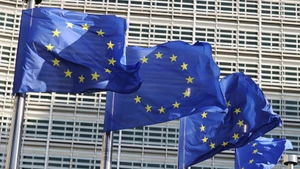IOM’s Missing Migrants Project has just released a report, which reveals alarming statistics about migrants globally. More than 30,000 cases of migrants are believed to have died of unknown nationality, meaning that tens of thousands of families around the world are still searching for their missing members.
Of the identifiable missing migrants, more than 9,000 are from African countries, more than 6,500 are from Asian countries, and about 3,000 are from the Americas.
Notably, countries that have experienced severe violence in recent years, such as Afghanistan and Syria, have the highest number of migrant deaths.
More than half of all migrant deaths recorded by the IOM are on routes to Europe and also within the Old Continent.
The Mediterranean routes alone have claimed the lives of at least 25,100 people. Africa is the second most dangerous region for migrants, with more than 9,000 deaths on the continent since 2014.
Meanwhile, nearly 7,000 migrants died in the Americas, most of them on the routes to the United States. On the US-Mexico border alone, more than 4,000 migrants have died since 2014. In Asia, 6,200 cases of ill-fated migrants have been recorded, of which children account for more than 11% of all deaths, the highest rate compared to other regions in the world.
The sad truth is that although thousands of deaths are recorded on migration routes each year, little effort seems to be made to address the consequences of these tragedies and prevent them.
IOM report said that despite the rising death toll, governments in the countries of departure, transit and destination of migrants, have done little to address the crisis.
Migration issues have returned in Europe, especially after a dispute broke out between France and Italy, over France’s acceptance of the Ocean Viking ship carrying 234 migrants, which Italy had previously refused. France accused Italy of not respecting maritime law when it refused the rescue ship to dock.
However, Italy and Greece responded that the European system of handling migrants placed a disproportionate burden on the two countries, with important maritime borders with North Africa.
The Interior Ministers of the European Union (EU) agreed to a 20-point action plan published by the European Commission (EC) on November 21, which mentioned the wish of the EU to cooperate more strongly with countries such as Libya, Tunisia or Egypt to stem the flow of migrants, as well as speed up the deportation of cases of illegal border crossing. Although all participants considered it a constructive meeting, the Interior Minister of the Czech Republic, which holds the EU’s rotating presidency, said delegates all agreed that more must be done, to find a lasting solution to the problem of migrants entering Europe.
The IOM stressed that to save lives and reduce risks to migrants, it is necessary to fulfil obligations under international law, in which the right to life must always be respected. Search and rescue operations, and the improvement and expansion of safe and regular migration routes should be prioritised. Regardless of the reason people choose to migrate, no one deserves to die in their quest for a better life.
















